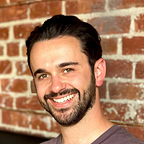This Is How You Hearken
--
Three months ago I wrote Hearken To The People — It Is By Their Will That You Publish, a post on Medium about a tool built by Jennifer Brandel and Corey Haines that allows journalists to ask their audience questions and poll them. I wrote about how it has the opportunity to break the outdated methodology of press initiated journalism and give editorial agendas to the people. I have since used the tool to engage my community in the social journalism M.A. program at the City University of New York Graduate School of Journalism. This is my reflection on that endeavor.
The social journalism program asks its students to pick a community to serve over the course of the program. I had originally picked student debt holders and distributed my Hearken module in March to ask them “What have you always wanted to ask a fellow student debt holder?”
These are some of the responses I received:
“What lobbying activities should we pursue going forward?” — Paul
“Would you support a collective debt jubilee?” — Matthew
“Did you pay more to be debt free earlier and live at home or pay over time and get to move out?” — Anonymous
I posted my call for responses in a Facebook group, in three different subreddits, my personal Facebook, my personal Twitter, and my personal Instagram. As far as I could tell, the responses I received came through the Facebook group.
The result of this Hearken experiment was my response to one of the responders who wanted to understand what was the best political action they could take to affect change. The title of the article is also its summary: Want To Help Student Debt Holders? Vote Democrat.
In that post that was inspired by a member of the community, my research showed that the greatest obstruction to student debt reform was the Republican Party:
An examination of the bills introduced in the 114th Congress on GovTrack.us shows that only Democrats have put forth legislation that directly deals with alleviating the burden of student debt for current student debt holders.
In fact, the 2012 Republican Party platform calls for the abolishment of the federal student loan program, advocating that those seeking to attend college should take private loans. There is no language addressing alleviating the burden for current student loan holders.
The answer, in this case, was to vote Democrat in national elections and ask your friends to do the same.
Lessons Learned
While I did receive feedback, I strongly feel there was not enough of it considering the reach of the distribution plan. I believe there are three reasons for this.
1.I imagine the Hearken module works best when there is a platform on which to engage your community. Readers who visit a publisher’s website might engage with the module on the homepage or the sidebar of an article. Having a publishing partner would seen a greater response rate.
2. I believe that, despite being self-conscious of my work, I committed an act of parachute journalism. While I was passionate about my subject and a member of the community I sought to cover, I was not living in these social media groups before the project. I appeared all of a sudden and, though I sought to give them the opportunity to set my reporting agenda, I did not do enough community engagement beforehand. I was a stranger asking community members to do something for me.
3. Hearken is not built for social distribution. Why would a user leave Facebook, Reddit, Twitter, or Instagram to make a comment or ask a question when they can do that very thing on the platform they are already on? Asking users to leave to engage the Hearken module was major weakness in my distribution strategy. On the other hand, Hearken is not built for collection of responses via social. Perhaps there are Facebook plugins or apps the Hearken team could build to make that happen.
To Hearken To My Community
When I first wrote about Hearken, I referred to it as the Moses of modern day journalism. I suggested that it could lead journalists into the promised land of public powered journalism but that it, like Moses, may never make it to the promised land but still leave a lasting impact.
As such, I intend to continue using Hearken in my endeavor to serve my new community, the students and alumni of my undergraduate alma mater, Rutgers University.
I will use Hearken as one of the digital community engagement tools in a campaign I will begin in the next few weeks to find out what my community wants to know about Rutgers University, the institution and bureaucracy that has such an outsize effect on their lives. I will also track comments on social media platforms to supplement Hearken responses.
The analog tool I will use in this campaign will be Groundsource, a community engagement platform that uses texting to have a conversation with members of your community. (Is texting analog?)
Why Public Powered Journalism?
One of the most impactful lessons of the first semester of the social journalism program has been design thinking. Coupled with attendance at two Society for News Design events, I have learned that success in any endeavor is more likely when that endeavor is a response to a user’s desires.
If journalism is intended to be the fourth estate, speak truth to power, or — as I heard Jim Schachter of WNYC once say — give power to the truth our standard bearers are the people we serve. The point of our mission is to do right by them — not necessarily ourselves. If we do not understand that, then we’re not better than the self-serving, power-hungry establishment we seek to hold accountable.
